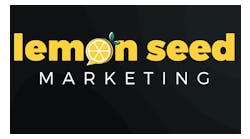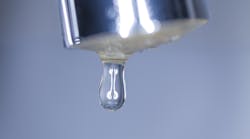Latest from Marketing
Sponsored
In parts of the country, water shortages are real. The reasons range from droughts, population growth, agriculture, environmental decisions, reservoir construction delays, and other reasons. Regardless, in these areas, water conservation measures are necessary, and plumbers can help. Plumbers cannot just help, they can make bank. Here are nine products and services you can offer to help your customers conserve water.
Understanding the Green Consumer
Before reviewing the products and services a plumber can offer, it is important to understand the mind of the green or environmentally conscious consumer. Plumbers tend to look at the world rationally. A plumber estimates the water saving from fewer gallons per flush, the cost of the water, and then weighs this against the cost of replacing a perfectly adequate toilet for one that uses less water. The plumber might conclude that the toilet replacement makes little economic sense and thus, declines to suggest it as an option.
The green consumer, however, is not rational. They are caught up in the hysteria that the world is on the verge of collapse due to the impact of humankind. They feel it is necessary to do their part to reduce their environmental footprint as much as possible. Economics matter little. If a product or task can make a difference and they can afford it, well it must be done.
Never hesitate to offer an environmental product or service to a consumer over cost concerns. Sure, many people will say no and opt for the lowest cost solution. The environmentally conscious consumer will opt for the greenest solution they can afford. For this reason alone, green products and services can be incredibly lucrative.
1. Plumbing Maintenance
First on the list is plumbing maintenance. Package up a water conservation offering for residential consumers. Leak test the house. Dye test each toilet. Check each indoor faucet and outdoor spigot for drips, applying logoed valve tags on all shut off valves. Identifying and correcting minor leaks is one of the easiest and most affordable ways to conserve water.
2. Ultra Low-Flow Toilets
By now, most homes have low flow, 3.5 GPF toilets. Toilet technology has advanced. Today, we have ultra low flow 1.6 GPF toilets. It is the plumber’s obligation to ensure homeowners are aware of their existence. It is not the plumber’s role to decide whether the homeowner will want one or not.
3. Dual Flush Toilets
Another water saving option is the dual flush toilet, also referred to as a low flush toilet. These may seem old hat to plumbers, but most homeowners are not even aware they exist. Suggest these as options for the most frequently used bathroom in the house.
4. Waterless Urinals
If the drain slope and drain heights can support it, suggest waterless urinals (i.e., dry urinals) for high traffic commercial and government buildings. The concern is typically about the odor, but with proper maintenance and the right biodegradable chemicals, this can be made a non-issue. For commercial entities with a stated commitment to the environment, waterless urinals might be an attractive retrofit. For government buildings, money is often no object when used in the pursuit of an environmental footprint reduction.
5. Hot Water Recirculation Systems
A lot of water gets wasted waiting for hot water to arrive at the tap, and not only does this waste water, it is inconvenient for the homeowner. All of this can be solved with a hot water recirculation system. This is the best of all worlds. People get to enjoy the luxury of instant hot water under the premise of water conservation.
6. Water Alarms
There are a number of low-cost water alarms on the market today. At the low end, offer a battery powered version that sounds an audible alarm when contacted with water. One should be placed under every sink and by water using appliances, such as water heaters, refrigerators with icemakers, clothes washers, and dishwashers.
7. Water Shut Off Valves
Demand is gradually growing for electronic water shut-off valves that cut off water to a water heater when there’s a leak. The primary impediment to wider use is a lack of consumer awareness. These should be suggested whenever a storage water heater is present. This is especially true when the water heater is located in the attic or an upstairs closet.
Another option is the whole-house water shut off valves that can be installed as part of a smart home package where Z-wave or WiFi water alarms trigger the valve to close, limiting the damage from a leak.
8. Touchless Faucets
Touchless faucets are both more sanitary and environmentally friendly. It may not save a huge amount of water, but it does save some. It is also cool to have one on the home.
9. Rainwater Capture Systems
Rainwater capture systems are a great way to save water. The captured rainwater from a rooftop can be used for landscaping irrigation. While this is not normally something plumbers handle, leaving it to landscapers, it could make for a nice product line extension.
Marketing Your Offering
Once the offering is assembled, it needs to be communicated. This can be done several was, none of which is mutually exclusive. You can post about the individual products and service on social media. Create web pages for each. Prepare direct mail post cards and leave behind fliers for service calls, home shows, etc. Some of these are “field of dreams” products. Let people know they are available, make them easy to buy, and they will.
For more information on plumbing and plumbing marketing, check out the Service Roundtable. Browse through the “free stuff” directory and see what you might want to download. Of course, you can join and gain access to thousands of plumbing specific content and take advantage of the savings that come with the industry’s largest buying group, Roundtable Rewards. Learn more at www.ServiceRoundtable.com or call 877/262-3341.
Matt Michel | Chief Executive Officer
Matt Michel is CEO of the Service Roundtable (ServiceRoundtable.com). The Service Roundtable is an organization founded to help contractors improve their sales, marketing, operations, and profitability. The Service Nation Alliance is a part of this overall organization.


